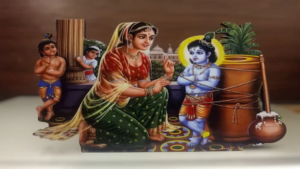The Sita Swayamvar, a pivotal episode in the Ramayana, is remembered for its grandeur and significance in Indian mythology. Central to this event was the mighty bow of Lord Shiva, known as Pinaka, which became the centerpiece of a challenge that only Lord Ram could conquer. But what happened to the broken bow after the swayamvar? Let’s delve into the story.
The Challenge of Pinaka
King Janaka of Mithila announced Sita’s swayamvar, declaring that only the one who could string the divine bow, Pinaka, would win her hand in marriage. This bow, gifted by Lord Shiva, was not only massive in size but also imbued with divine power. Mighty kings and warriors failed to even lift it, let alone string it. It was Lord Ram, the seventh incarnation of Lord Vishnu, who effortlessly lifted the bow and broke it in the process, signifying his unparalleled strength and divine mission.

The Moment Described in Ramcharitmanas
The breaking of the bow is beautifully narrated in Goswami Tulsidas’ Ramcharitmanas:
लेत चढ़ावत खैंचत गाढ़ें।
काहुं न लखा देख सबु ठाढ़ें।
तेहि छन राम मध्य धनु तोरा।
भरे भुवन धुनि घोर कठोरा।Translation
- लेत चढ़ावत खैंचत गाढ़ें: Lord Ram lifted the bow, strung it, and began to pull it with ease, demonstrating his unparalleled strength and skill.
- काहुं न लखा देख सबु ठाढ़ें: Everyone present was astounded, standing in awe as they couldn’t comprehend what was happening. The swiftness and grace of Ram’s actions left them spellbound.
- तेहि छन राम मध्य धनु तोरा: At that very moment, the bow broke into two with a thunderous sound, signifying Ram’s victory.
- भरे भुवन धुनि घोर कठोरा: The deafening sound of the bow breaking echoed throughout the universe, leaving a lasting impression of this monumental event.
Significance of the Verse
- Divine Strength of Ram
The verse highlights Ram’s divine power. While great kings and warriors failed even to lift the bow, Ram, with his humility and grace, effortlessly broke it. This act wasn’t just a show of physical strength but a testament to his divinity and destiny.- Symbolism of the Bow Breaking
The breaking of the bow, Pinaka, symbolizes the shattering of pride, ego, and obstacles. It signifies the ultimate triumph of dharma (righteousness) and the will of the divine.- Awe and Reverence
The moment left the assembly in awe, reinforcing Ram’s role as the chosen one to fulfill a higher cosmic purpose. This act also sealed the divine union of Ram and Sita, symbolizing the balance of masculine and feminine energies in the universe.This verse beautifully captures the pivotal moment in the Sita Swayamvar and remains one of the most celebrated depictions of Ram’s divine strength and grace in Indian spirituality.

The Fate of the Broken Bow
According to local legends in the Mithila region, when Lord Ram broke Lord Shiva’s divine bow, Pinaka, during Sita’s Swayamvar, it shattered into three pieces:
- One piece ascended to the sky.
- Another descended into the underworld (Patala).
- The third fell to the earth.
The fragment that fell to the earth is believed to have landed in Dhanushadham, located approximately 18 kilometers northeast of Janakpurdham (Janakpur) in Nepal. This site holds significant religious importance, and a fossilized fragment of the bow is said to be present there.
Devotees visit Dhanushadham to pay homage to this sacred relic, especially during the Makar Mela festival, which occurs every Sunday in the month of Magh (January/February). This tradition has been maintained since Vedic times, attracting thousands from Nepal and India.

Also Read: Vivah Panchami this year Mahurat, Importance and Puja vidhi
The Symbolism of Pinaka’s Breaking
The breaking of Pinaka was more than just a display of physical strength. It symbolized Lord Ram’s destiny to protect dharma and establish justice. It also marked the unification of Lord Vishnu (in the form of Ram) and Goddess Lakshmi (in the form of Sita), a divine event that held immense cosmic importance.
- Victory of Dharma: It marked Lord Ram’s supremacy in upholding righteousness and his role as a divine protector.
- Destruction of Ego: The shattered bow symbolized the breaking of pride and ego among the competing kings.
- Unity of Divine Energies: The event paved the way for the union of Ram (Vishnu) and Sita (Lakshmi), representing the harmony of masculine and feminine divine energies.
The story of Sita Swayamvar and the fate of Pinaka continues to inspire devotees, reminding them of the virtues of humility, devotion, and the power of divine will. The bow, though broken, left a lasting legacy in the annals of mythology and the hearts of believers.
By understanding the fate of the bow, we gain deeper insights into the profound symbolism of this epic tale, which still resonates in the cultural and spiritual fabric of India.

















Add comment